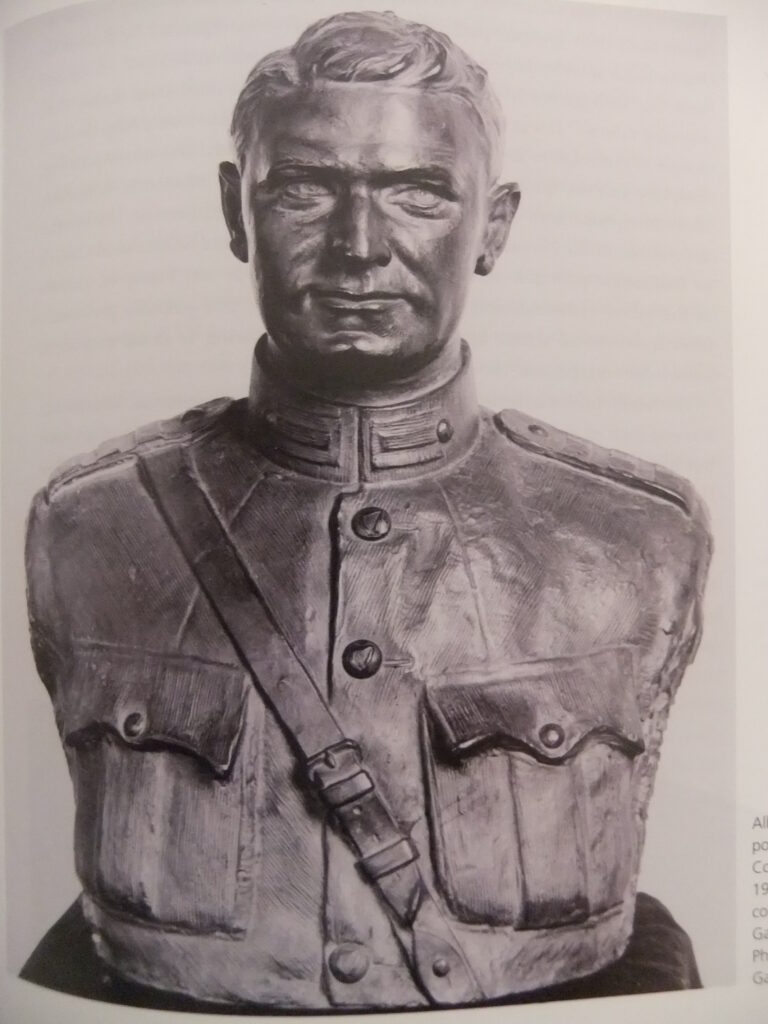


Albert Power was prolific working non stop throughout the Country until his untimely death in 1945. He was The Chief Sculptor of the Irish Free State for over three decades. This Exhibit will concentrate on his Extensive Body of Work that can be seen around the Beautiful City of Dublin with a background story.
Born Dublin s Northside 16th November 1881 at 8 Barrack Street now Benburb St.
In 1883 the family moved to a shared house at 17 Ellis Quay.
As a child Albert showed a keen interest in clay modelling and would make clay heads of his friends in a nearby brick yard were they d march up & down the street with the heads on sticks.
Albert attended the Christian Brothers School in North Brunswick Street.
1894 aged 13 he started work in the Monumental Firm of George Smyth on Great Brunswick street. The apprenticeship lasted 7 years which included attending life drawing classes at the Royal Hibernian School and the Dublin Metropolitan School of Art. (DMSA).
Albert s life span coincided with the dawning of a New Century with Ireland wanting to take charge of it s own destiny. Some of his fellow students were involved in National Movements like, The Literary & Celtic Revival & Gaelic League.
Albert was class mates were Painter Kathleen Fox, Margaret Crilly & Grace Gifford future wives of Harry Clarke & Joseph Plunket , Countess & Casimir Markievicz & Willie Pearse who was also a sculptor and the younger brother of Padraig Pearse Leader of the 1916 Rising.
Albert and Willie were close friends and travelled abroad to see the great.
1914. Albert was to Carved 14 heads in Granite on the Upper Faade of he New University at Earlsfort Terrace now The National Concert Hall They represent the main areas of learning Arts, The Sciences, Medicine & Celtic Studies.
1917. The Munster and Leinster Bank Now The Grand Central Caf on the corner of Abbey Street. The Keystone above the entrance was a richly carved Coat of Arms of Leinster & Munster surrounded by a garland of Bay Leaves the Symbol of Victory.
Albert G. Power: Celebrating the Artistic Legacy of an Irish Sculptor
Bio:
Albert G. Power (1881-1945), a luminary in the realm of Irish sculpture, brilliantly married traditional Irish motifs with the evolving artistic sensibilities of his time. Born and bred in Dublin, Power’s masterpieces have adorned numerous landmarks, institutions, and public spaces across Ireland, serving as an enduring testament to his exceptional craftsmanship and profound commitment to the arts.
Early Life:
Albert George Power’s journey into the world of art began with his birth in Dublin on 16 November 1881. His inherent artistic inclination was nurtured at the Dublin Metropolitan School of Art, where he studied under the esteemed sculptor Oliver Sheppard. In these formative years, Power was deeply influenced by the Celtic Revival movement, a period where Irish artists sought to carve out a distinct national identity by drawing from the nation’s rich cultural and mythological past.
Notable Works


Political Commission’s

Certainly! Here’s a description for the Cenotaph Memorial in Leinster Lawn, contextualized within the framework of Albert G. Power’s work:
“The Cenotaph Memorial in Leinster Lawn emerges as a profound symbol of remembrance and national identity, born from the collaborative artistic vision of Albert G. Power and George Atkinson in 1923. Crafted meticulously in plaster and wood, this memorial initially stood as a transient yet poignant homage to two titanic figures in Irish history: Arthur Griffith and Michael Collins. Power, known for his emotive and evocative style, infused the memorial with a sense of solemn dignity and reverence, befitting the memory of the celebrated patriots it was designed to honor.
Initially situated in Leinster Lawn, this Cenotaph was more than a mere sculpture; it was a vessel of collective memory, a place for the public to converge in reflection and respect. The choice of materials – plaster and wood – while unorthodox, speaks to the immediacy and urgency of the memorial’s creation, reflecting the raw, unprocessed grief of a nation in mourning. This memorial, while later replaced, served as an integral step in the journey towards the creation of a more permanent tribute. It stands testament not only to the legacy of Griffith and Collins but also to the artistic prowess of Albert G. Power, whose work continues to resonate through the annals of Irish history.”